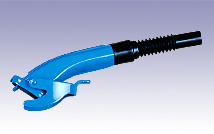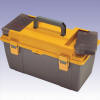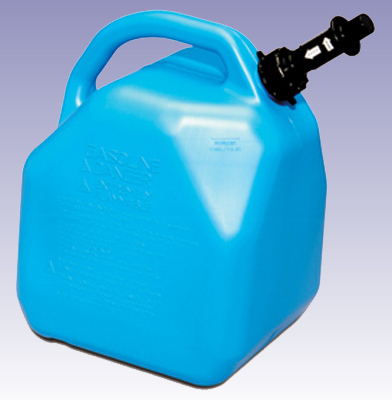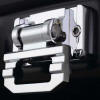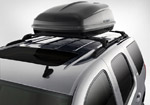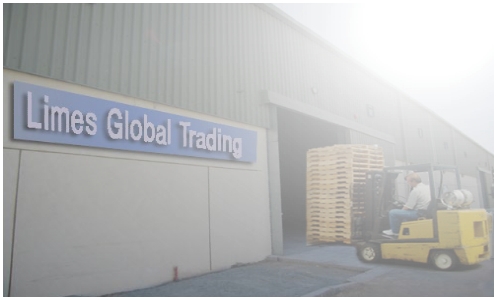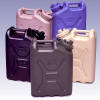|
|||||||||||||||||||||||||||||||||||||||||||||||||||||||||||||||||||||||||||||||||||||||||||||||||
|
|
|||||||||||||||||||||||||||||||||||||||||||||||||||||||||||||||||||||||||||||||||||||||||||||||||
|
|||||||||||||||||||||||||||||||||||||||||||||||||||||||||||||||||||||||||||||||||||||||||||||||||
More Products:
|
|
A
Kerosene jerry can is a robust
fuel container made from pressed steel. It was originally designed
in Germany in the 1930s for military use and holds 20 litres
of fuel. The development of the Kerosene jerry cans were a huge improvement
on earlier designs, which required tools and funnels to use. In 1939, an American engineer named Paul Pleiss had built a vehicle to journey to India with his German colleague. After building the car, they realized they didn't have any storage for emergency water. The German engineer had access to the stockpile of Kerosene jerry cans at Tempelhof Airport and just managed to take three Kerosene jerry cans. They drove across 11 national borders without incident until Field Marshal Goering sent a plane to take the engineer home. The German engineer compounded his treason by giving Pleiss complete specifications for the manufacture of the Kerosene jerry can. Pleiss continued on to Calcutta, put his car in storage, and flew back to Philadelphia. Pleiss told American military
officials about the Kerosene jerry cans, but they ignored him. Without a
sample, he realized he couldn't get anywhere. He eventually got the
car shipped to New York by a roundabout method, and sent a Kerosene
jerry can
to Washington. The War Department decided instead to use the WWI
ten-gallon Kerosene jerry can with two screw closures, which required both a
wrench and funnel for pouring.
At the beginning of the Second World War, the British Army were equipped with simple rectangular fuel containers: a 2 gallon (9 litres) container made of pressed steel and a 4 gallon (18 litres) container made from tin plate. While the 9 litre - 2 gallon containers were relatively strong, they were expensive to produce. The 18 litre - 4 gallon containers, which were mainly manufactured in the third world, were cheap and plentiful but they were not very robust. Consequently they were colloquially known as flimsies. While adequate for
transportation by road in Europe, the flimsies proved to be
extremely unsatisfactory during the Northof
the fuel being lost as the containers were easily punctured. The
resultant leakages also made the transportation vehicles liable to
fuel fires. The sides of the Kerosene jerry can were marked with cross-like indentations that strengthened the Kerosene jerry can while allowing the contents to expand, as did an air pocket under the handles when the Kerosene jerry can was filled correctly. Rather than a screw cap, the containers used a cam lever release mechanism with a short spout secured with a snap closure and an air-pipe to the air pocket which enabled smooth pouring (which was omitted in some copies). The interior of the Kerosene jerry can was also lined with an impervious plastic, first developed for steel beer barrels that would allow the cans to be used for either water or gasoline. The Kerosene jerry can was welded, and had a gasket for a leak-proof mouth. The British used cans captured from the "Jerries" (Germans) — hence "Kerosene jerry cans" — in preference to their own containers as much as possible. Later in 1940 Pleiss was in London, and British officers asked him about the design and manufacture of the Kerosene jerry can. Pleiss ordered the second of his three Kerosene jerry cans flown to London.
|
Visit:
www.4x4-web.com
www.4x4online.biz
www.gas-can.biz
www.jerrycans.org
www.limes-germany.de
www.limes-globaltrading.de
www.limes-saifzone.de
www.limes-sharjah.de
www.petrolcans.com
www.logo-animator.net
www.myflat.org
www.limes-jobs.com
www.elarabi.biz
www.elarabi.de
www.elarabi.eu
www.elarabi.org
www.hasarabi.de
More Products:
20l ecco plastic kerosene cans
military metal fuel jerry cans spouts
fuel jerry cans and military metal fuel jerry cans carrier
plastic water cans and military plastic water cans holders
military jerrycans and jerrycans holders
water jerrycan, and jerrycans holders
collapsible water cans and metal water jerry cans
collapsible water cans and military metal water jerry cans
plastic diesel fuel jerry cans
plastic diesel fuel jerry cans
military plastic petrol jerry cans holders
plastic diesel fuel jerry cans
military plastic diesel fuel jerry cans holders
20l stainless steel jerry cans spouts
stainless steel and non-explosion military jerrycans
military metal fuel jerry cans
20l military metal fuel jerry cans holders
10l metal fuel jerry cans and military metal fuel jerry cans nozzle
non-explosion military jerry cans holders
non-explosion military jerrycans spouts
military plastic gasoline fuel jerry cans
plastic gasoline fuel jerry cans
20l military plastic gasoline fuel jerry cans
military plastic gasoline fuel jerry cans carriers
20l military plastic gasoline fuel jerry cans holders
plastic gasoline fuel jerry cans
20l metal fuel and water jerry can
10l metal fuel jerry cans and military metal fuel jerry cans holders
20l military metal fuel jerry cans carrier
water jerry cans and military plastic water jerry cans
military plastic water cans spouts
petrol military metal jerry cans
military metal petrol jerry cans
explosion-safe fuel jerricans holders
metal petrol jerry cans accessories
water jerrycans and military water jerrycans
plastic fuel jerry cans accessories
fuel jerry cans and military plastic fuel jerry cans
water cans and military metal water jerry cans
military metal water jerry cans holders
metal water jerry cans nozzles
military metal fuel jerry cans carriers
Fuel storage Tanks and Containers
fuel and water storage containers
non-explosion military jerry cans
20l nato metal fuel jerry cans
20l nato military plastic water cans
plastic petrol jerrycans spouts
military plastic petrol jerrycans
petrol jerrycans and military jerrycans holders
Fuel storage Tanks and Containers
plastic water jerricans spouts
Fuel storage Tanks and Containers
military metal fuel jerry cans accessories
non-explosion military jerrycans
20l military metal fuel jerry cans accessories
Stainless steel fuel can accessories
Ausguss-Stutzen für Edelstahl-Kanister
Can accessories, gas can carrier
military metal fuel jerry cans accessories
military jerrycans accessories
20L, 10L Stainless Steel jerry cans
20L, 10L Stainless Steel jerry cans
metal fuel storage cans accessories
military fuel storage cans accessories
Genuine SUV 4x4 Parts & Accessorie
Fuel storage Tanks and Containers

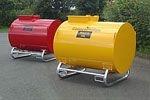
.jpg)
